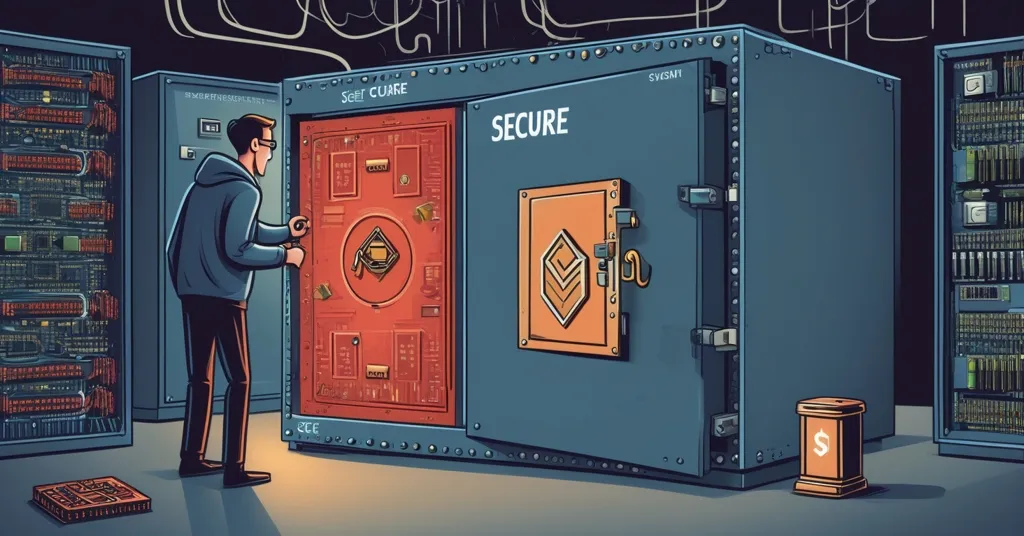Ledger Exposes Trezor Safe 3 and 5’s Supply Chain Attack Vulnerability

Ledger Highlights Supply Chain Vulnerabilities in Trezor Safe Devices Despite Enhanced Security
Ledger’s recent security report has sparked a heated debate in the crypto community by revealing that Trezor’s Safe 3 and Safe 5 hardware wallets, while boasting advanced security features, remain vulnerable to supply chain attacks. This revelation comes despite Trezor’s assurances that user funds are secure.
- Ledger security analysis on Trezor Safe 3 and Safe 5
- Both models feature a highly secure chip for PIN and key protection
- Vulnerability to supply chain attacks due to microcontroller use
- Trezor assures user funds are safe despite known issues
Released in late 2023 and mid-2024 respectively, Trezor’s Safe 3 and Safe 5 have been touted as game-changers in hardware wallet security. At their core is a highly secure chip, known as an EAL6+-certified Secure Element, which handles PIN verification and key storage. This upgrade, as Ledger’s CTO Charles Guillemet noted, “makes it harder for attackers to extract a user’s private keys through conventional means.” For those new to the crypto scene, a hardware wallet is like a digital safe, keeping your cryptocurrencies offline and out of reach from hackers.
Yet, this shiny armor has a chink. Ledger’s report warns of a lurking danger: the devices’ reliance on a microcontroller, specifically the TRZ32F429 (a customized STM32F429 chip), for cryptographic operations. This component is susceptible to voltage glitching, a sneaky trick hackers use to manipulate the device’s firmware. Imagine a thief slipping a tampered product onto a store shelf before it’s bought; that’s essentially what could happen with a supply chain attack. Such an exploit could lead to the stealthy theft of user funds, a scenario that’s the stuff of crypto nightmares.
Trezor, however, stands firm in their stance. “Funds are safe and the discovered exploit is a previously known attack,” they assert. They acknowledge the vulnerability but emphasize that it’s not a new issue. Yet, the ghost of the January 2024 security breach, which exposed the contact information of nearly 66,000 users, still haunts the conversation. It’s a stark reminder that in the crypto world, staying vigilant is non-negotiable.
This report from Ledger, a direct competitor, throws a fascinating twist into the ongoing narrative of hardware wallet security. It’s a testament to the relentless push for better security while wrestling with persistent vulnerabilities. In the crypto community, where decentralization and privacy are cherished, security is the lifeblood that keeps the dream alive. This incident with Trezor’s Safe devices underscores the importance of continuous vigilance and the need for manufacturers to outsmart potential threats.
As we champion the potential of Bitcoin and blockchain to disrupt traditional finance, we must also face the realities head-on. The promise of financial freedom and the excitement of effective accelerationism (e/acc) should not blind us to the challenges. While we celebrate advancements like those in Trezor’s Safe 3 and Safe 5, we must also heed the warnings from reports like Ledger’s. It’s a delicate balance between optimism and realism, but in our quest for a decentralized future, lowering our guard is not an option.
Moreover, this issue reflects broader challenges in the hardware wallet industry. The balance between enhancing security and maintaining usability is a continuous dance. Other manufacturers are also grappling with similar vulnerabilities, pushing the envelope to find innovative solutions. As we look to the future, potential security enhancements or alternative technologies could emerge to mitigate these supply chain risks, ensuring the safety of our digital assets.
The cryptocurrency community’s response to Ledger’s report and Trezor’s assurance has been mixed. While some applaud the transparency and the ongoing efforts to improve security, others are concerned about the implications for user trust and market perception. It’s a reminder that in this fast-evolving space, staying informed and cautious is key.
Key Takeaways and Questions:
- What are the main security improvements in Trezor Safe 3 and Safe 5?
The main improvements include the incorporation of a highly secure chip, which handles PIN verification and key storage, significantly enhancing protection against physical seed recovery attacks.
- Why does Ledger claim that Trezor Safe devices are still vulnerable?
Ledger claims that despite the Secure Element, the devices remain vulnerable to supply chain attacks because cryptographic operations are still performed on a microcontroller (TRZ32F429) that can be manipulated through voltage glitching attacks.
- What are the potential risks of a supply chain attack on Trezor Safe devices?
The primary risk is that attackers could modify the firmware before the device reaches the user, potentially leading to the theft of user funds without detection.
- How has Trezor responded to Ledger’s report?
Trezor has assured users that their funds are safe and acknowledged the vulnerability as a known issue, though they have not yet provided an official comment on the report or details on a patch.
- What was the impact of the January 2024 security breach on Trezor users?
The January 2024 security breach exposed the contact information of nearly 66,000 Trezor users, potentially increasing the risk of phishing attacks.



